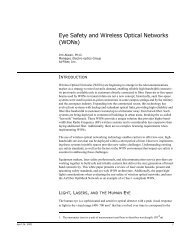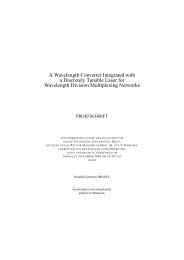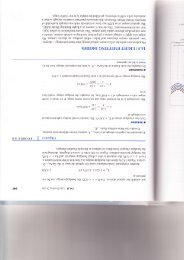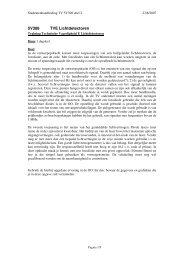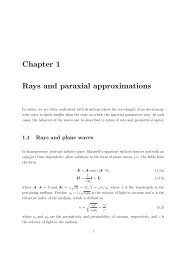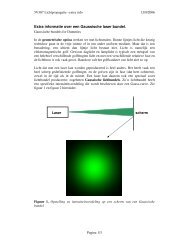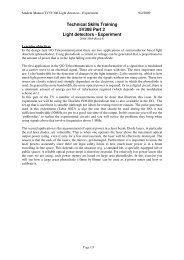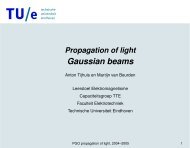High bit-rate combined FSK/IM modulated optical signal generation ...
High bit-rate combined FSK/IM modulated optical signal generation ...
High bit-rate combined FSK/IM modulated optical signal generation ...
Create successful ePaper yourself
Turn your PDF publications into a flip-book with our unique Google optimized e-Paper software.
To assess the feasibility of <strong>FSK</strong> label insertion we introduce a wavelength converter<br />
based on a Mach-Zehnder interferometer with semiconductor <strong>optical</strong> amplifier (SOA). The<br />
input <strong>signal</strong> at 1559.98 nm is <strong>IM</strong> <strong>modulated</strong> at 10G<strong>bit</strong>/s. The output <strong>signal</strong> from the GCSR<br />
laser with the <strong>FSK</strong> modulation at 100 M<strong>bit</strong>/s is used as the probe <strong>signal</strong> for the SOA-MZI.<br />
This configuration allowed us to insert the <strong>FSK</strong> label onto the incoming <strong>IM</strong> <strong>signal</strong>. The input<br />
power level at the wavelength converter is adjusted using an EDFA up to –2 dBm for the <strong>IM</strong><br />
<strong>signal</strong> in order to ope<strong>rate</strong> in the non-inverting part of the conversion curve of the SOA-MZI.<br />
The power level of the <strong>FSK</strong> <strong>signal</strong> is set to 0 dBm.<br />
Fig. 3. The experimental setup for <strong>FSK</strong>/<strong>IM</strong> <strong>generation</strong> and label insertion (a), where we can<br />
observe the recovered <strong>FSK</strong> <strong>signal</strong> (b) and the recovered eye patterns (c).<br />
The <strong>signal</strong> output power level was 1.5dBm and the extinction ratio was measured to be 7dB.<br />
The improvement in the output extinction ratio is due the operating point of the wavelength<br />
converter that was adjusted to maintain the same extinction ratio value ratio for the <strong>IM</strong> <strong>signal</strong>.<br />
This is a requirement for proper detection of the <strong>FSK</strong> <strong>signal</strong>.<br />
Fig. 4. Comparison of the BER versus the receiver sensibility for the <strong>FSK</strong> and the <strong>IM</strong> <strong>signal</strong><br />
after and before the wavelength converter.<br />
In Fig. 4 is presented the <strong>bit</strong>-error <strong>rate</strong> (BER) as function of the input power. As it can be<br />
observed in this figure, the inserted <strong>FSK</strong> <strong>signal</strong> suffers only from 0.5dB power penalty on the<br />
#3177 - $15.00 US Received October 10, 2003; Revised November 10, 2003<br />
(C) 2003 OSA 17 November 2003 / Vol. 11, No. 23 / OPTICS EXPRESS 3139



